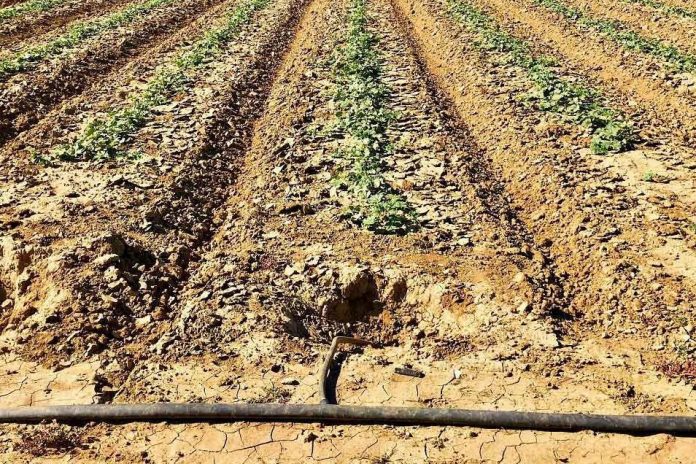
April 20 (UPI) — As farmers deal with supply chain disruptions due to the coronavirus pandemic, drought conditions have gripped California, Florida, parts of the Southwest and south Texas.
The drought means additional expense for some farmers to find water or bring their livestock to a water source. It also increases the cost and a lack of selection at grocery stores for some crops grown in the United States.
But any impact on price is hard to track amid widespread disruptions in the supply chain during the pandemic, farmers said.
A little over 12 percent of the country was experiencing moderate to exceptional drought at the end of March, and Florida’s condition worsened to severe drought late last week, according to reports from U.S. Drought Monitor.
Rainfall, soil moisture and satellite imagery of vegetation indicated fire risk, water shortages and crop loss in the state.
California and Florida are the only areas with significant winter produce crops, and farmers in both states harvested as drought concerns grew this spring. Florida produces a broad variety of fruit and vegetables in winter, while California’s production includes groves of almonds and other nuts.
Drought in the winter in other regions of the country can affect cattle and production of winter wheat.
“One-fourth of my land will be fallow going forward due to drought concerns,” said Joe del Bosque, who farms 2,000 acres of almonds and produce in Central California’s Fresno County.
“People are talking about the pandemic and not the water problem here, but it is a problem and it will impact food supply locally and jobs in this community,” del Bosque said.
Bosque’s farms are in the San Joaquin Valley, which relies on irrigation from northern California, where reservoirs still are full, but drought conditions have worsened. He started planting melons in late March.
“I don’t know what the market will be like, but I have to plant in the hopes there will be enough water,” Bosque said.
Areas of northwestern California have significant rainfall deficit, said David Simeral, associate research climatologist at the Western Regional Climate Center in Reno, Nev.
“Stream flows are low and there are poor conditions with pasture and rangeland,” Simeral said.
In Florida, the South Florida Water Management District, which oversees 16 counties from Orlando to Miami and the Florida Keys, recorded the driest March in history — with just a quarter-inch of rain.
Hundley Farms, which is based in South Florida’s Palm Beach County, has seen reduced yield for corn and other vegetables because of the drought, said Eric Hopkins, vice president and part owner. The company manages or owns about 20,000 acres in Florida and Georgia.
“It’s been in the 90s on many days — like it’s August. Everything is crispy,” Hopkins said.
He said the company also dealt with the sudden lack of demand at hotels and restaurants because of this pandemic.
“Since we couldn’t sell a lot of our sweet corn, we shipped some north for the cattle, where the grass had died in the heat,” he said.
Florida’s Lake Okeechobee, which is half the size of Rhode Island, is the main reservoir for farmers and supplies canals that also lead to coastal cities.
“Lake Okeechobee is dropping and will soon be below normal levels [for this time of year],” said Eric Swartz, lead meteorologist with the water district.
Texas has seen an improvement in drought conditions over the last few months, but not along the Gulf Coast, said Victor Murphy, a climate service program manager for the National Weather Service in the Dallas area.
Texas winters generally don’t allow crop production, but cattlemen along the Rio Grande River and the Gulf Coast also have to move herds to water sources and add grain or other feed to offset the lack of grass, said Victor Murphy, climate service program manager with the National Weather Service in the Dallas area.






